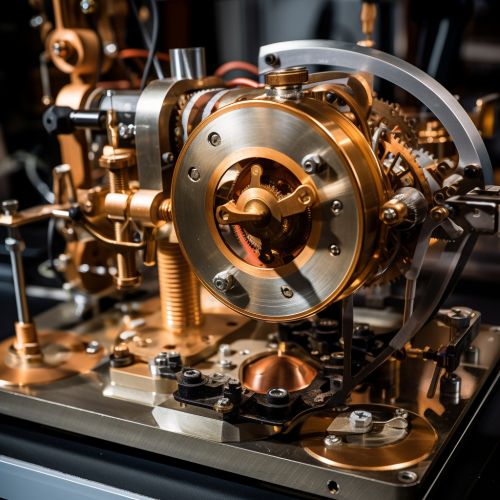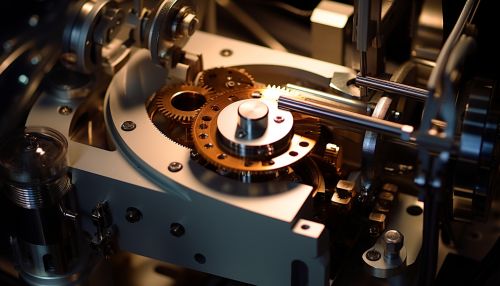Quantum Optomechanical System
Introduction
Quantum optomechanical systems are a subfield of quantum mechanics that studies the interaction between light and mechanical motion at the quantum level. This field has gained significant attention due to its potential applications in quantum computing, quantum communication, and quantum sensing.
Principles of Quantum Optomechanics
Quantum optomechanics is based on the principles of quantum optics and quantum mechanics. The field primarily focuses on the interaction between light and mechanical motion in a quantum regime. This interaction is often achieved through an optical cavity, where light is trapped between two mirrors and interacts with a mechanical oscillator.


Optomechanical Systems
Optomechanical systems are devices that allow for the interaction between light and mechanical motion. These systems typically consist of an optical cavity and a mechanical oscillator. The optical cavity is often a pair of mirrors that trap light, while the mechanical oscillator is a movable mirror that can vibrate at certain frequencies. The interaction between the trapped light and the vibrating mirror leads to a variety of quantum phenomena.
Quantum Phenomena in Optomechanical Systems
Quantum phenomena in optomechanical systems include quantum entanglement, quantum superposition, and quantum squeezing. These phenomena are a result of the interaction between light and mechanical motion in the quantum regime.
Applications of Quantum Optomechanics
Quantum optomechanics has a wide range of potential applications, including quantum computing, quantum communication, and quantum sensing. In quantum computing, optomechanical systems could be used to create quantum bits, or qubits, which are the fundamental units of information in a quantum computer. In quantum communication, optomechanical systems could be used to transmit quantum information over long distances. In quantum sensing, optomechanical systems could be used to detect tiny forces or displacements with unprecedented sensitivity.
Future Directions
The field of quantum optomechanics is still in its early stages, and there are many exciting directions for future research. These include exploring new types of optomechanical systems, investigating novel quantum phenomena, and developing advanced techniques for controlling and manipulating light and mechanical motion at the quantum level.
